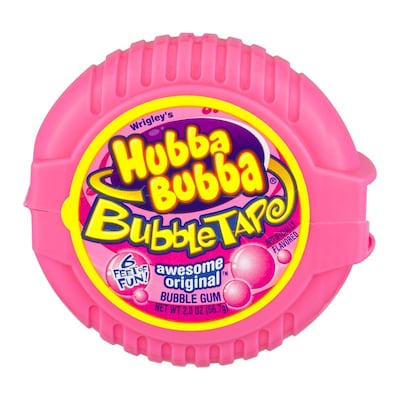It may seem like a thoroughly modern substance, but chewing gum has been around a long time. Ancient Greeks chewed on “mastich,” which grew on a prickly shrub found in India and Arabia, according to the writings of Pliny the Elder.
The Mayans and Aztecs had their own version of gum in the form of chicle, a resin from the sapodilla tree found in the region. Mayan archaeologist Jennifer Mathews writes about the path that led from there to modern times in her book Chicle: The Chewing Gum of the Americas, from the Ancient Maya to William Wrigley.
For a product that has little to no nutritional value, it has had remarkable staying power. Wrigley, one of the most popular brands here, has been around as a company since 1891 when it was set up in Chicago. It launched Juicy Fruit and Spearmint gum in 1893. Soldiers in the first World War chewed on gum.

The brands are now owned by the American behemoth Mars Inc. If you chew gum, it is likely that it is a Mars brand. So, while the flavours and packaging differ, the ingredients tend to be much that same.
What is most striking is that so many of the products have a concoction of sweeteners, rather than sugar. Take Wrigley’s Extra Peppermint. You might expect the first ingredient on the list to be Arabic gum, but it’s not. First there is xylitol, sorbitol, aspartame, mannitol and acesulfame K, which are all sweeteners. That means there are more sweeteners than gum in the product, which is fine except that sweeteners cause their own effects.

Take xylitol, which is generally derived from fruit. Some studies have shown that it is good for the teeth and it has a gentler effect on blood sugar levels than sugar. There are a couple of downsides, however. Xylitol is toxic for dogs and too much can send humans running to the loo.
Mannitol and sorbitol in small doses won’t harm dogs but can keep humans moving to the loo. Hence the warning on the packet: “Excessive consumption may produce laxative effects.” What is excessive? That is an answer you may have to find out for yourself. The packet notes that the gum is “beneficial for dental health as it helps to neutralize plaque acids”. It doesn’t mention digestive health however.
Another warnings in bold notes: “Contains a source of phenylalanine.” That’s there because aspartame, if taken in large doses, can cause a rapid increase in brain levels of phenylalanine. This isn’t a health concern for most people, according to the Mayo Clinic, unless they have the genetic disorder phenylketonuria (PKU) or other health conditions. Phenylalanine occurs naturally in some foods, such as milk, eggs and meat. It can cause seizures and other problems in people with PKU, however, it says.
Those who have a sleep disorder, anxiety disorder or other mental health condition may find that phenylalanine worsens feelings of anxiety and jitteriness, it adds. The clinic also advises those taking certain anti-depressive medications to use aspartame products cautiously.
The most obvious difference between Wrigley’s Extra Peppermint and its Airwaves Eucalyptus brands is that it uses isomalt and maltitol sweeteners in place of xylitol. (There is no sign of peppermint or eucalyptus in the ingredients of either product.)
The key is to know if you will be affected. Most national health services say that sweeteners can be taken by most people in moderation. It’s worth keeping an eye on consumption, though, as sweeteners are found in so many products labelled “sugar-free” such as yoghurts, desserts and drinks.
Hubba Bubba bubble gum, another Wrigley brand, uses sugar, glucose syrup and flavourings to sweeten its product. So it has more calories and has a greater effect on blood sugar levels. The ingredients also lists “antioxidant BHA”. This refers to butylated hydroxyanisole, which is used as a preservative, particularly to stop oils from going rancid.
There are brands other than Wrigley out there, such as Mentos, which is from Holland. The list of ingredients tends to be much the same, however, particularly with “sugar-free” flavours.
Or there is the Bazooka Tutti frutti and Raspberry flavour sugar-free Bubble Gum, which is made in Tunisia, though the parent company is American.
It might be made in north Africa, but it still has the a similar mixture of sweeteners, flavourings, preservatives and thickeners.
It all comes back to the illusion of choice.
FOOD LABELS SERIES
- Bread
- Soup
- Crisps
- Sliced ham
- Cream crackers
(search other food labels articles here)









